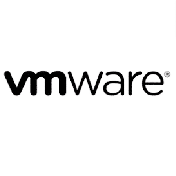Seminarinhalt
Die technische Fachkraft für Azure Sicherheit implementiert, verwaltet und überwacht die Sicherheit für Ressourcen in Azure sowie in Multicloud- und Hybridumgebungen als Teil der umfassenden Infrastruktur.
Zu den Aufgaben gehören das Verwalten des Sicherheitsstatus, Identifizieren und Beheben von Sicherheitsrisiken, Durchführen von Bedrohungsmodellierungen und das Implementieren des Bedrohungsschutzes.
Zudem können sie auf Eskalationen von Sicherheitsincidents reagieren.
Zu den Aufgaben gehören das Verwalten des Sicherheitsstatus, Identifizieren und Beheben von Sicherheitsrisiken, Durchführen von Bedrohungsmodellierungen und das Implementieren des Bedrohungsschutzes.
Zudem können sie auf Eskalationen von Sicherheitsincidents reagieren.
Programm
AZ-900 - Praxis+ Microsoft Azure Fundamentals
- Describe Core Azure Concepts
- Describe Core Azure Services
- Describe Core Solutions and Management Tools on Azure
- Describe general Security and Network Security Features
- Describe Identity, Governance, Privacy and Compliance Features
- Describe Azure Cost Management and Service Level Agreements
- Describe Security and Compliance Concepts
- Describe Identity Concepts
- Describe the Function and Identity types of Microsoft Entra ID
- Describe the Authentication Capabilities of Microsoft Entra ID
- Describe Access Management Capabilities of Microsoft Entra ID
- Describe Core Infrastructure Security Services in Azure
- Describe the Security Management Capabilities in Azure
- Describe the Capabilities in Microsoft Sentinel
- Describe Threat Protection with Microsoft 365 Defender
- Describe Microsoft Service Trust Portal and Privacy capabilities
- Describe the Compliance management capabilities in Microsoft Purview
- Describe Information protection, data lifecycle management, and data governance capabilities in Microsoft purview
- Describe the insider risk capabilities in Microsoft purview
- Describe the ediscovery and audit capabilities in Microsoft purview
- Prerequisites for Azure administrators
- Manage identities and governance in Azure
- Configure and manage virtual networks for Azure administrators
- Implement and manage storage in Azure
- Deploy and manage Azure Compute resources
- AZ-1002 - Sicheren Zugriff auf Workloads für Azure Virtual Network konfigurieren
- AZ-1003 - Sicherer Speicher für Azure Files und Azure Blob Storage
- AZ-1007 - Bereitsellung und Verwaltung von Linux-VMs auf Azure
- AZ-1004 - Bereitstellung und Konfiguration von Azure Monitor
- Manage identity and access
- Secure networking
- Secure compute, storage, and databases
- Manage security operations
- SC-5008 - Verwalten und regeln Sie Berechtigungen mit Microsoft Entra ID
- AZ-1004 - Bereitstellung und Konfiguration von Azure Monitor
- SC-5001 - Konfiguration der SIEM-Sicherheitsoperationen mit Microsoft Sentinel
- SC-5002 - Sicherung von Azure-Diensten und Workloads mit Defender for Cloud
- Prinzipien und zugrundeliegende Theorie von Scrum
- Überblick über das Scrum Team
- Scrum Events
- Scrum Artefakte
- Die Rolle des Scrum Master
- Die Rolle des Product Owner
- Theorie-Input & Erfahrungslernen
- Vorbereitung auf die Zertifizierungen
Enthaltene Module
Wichtige Information
Dieser Lehrgang besteht aus folgenden Trainings:
- AZ-900plus Praxis+ Microsoft Azure Fundamentals
- SC-900plus - SC-900 Praxis+ Microsoft Security, Compliance, and Identity Fundamentals
- AZ-104T00 - Microsoft Azure Administrator
- AZIV - Azure implement & manage
- AZ-500T00 - Microsoft Azure Security Technologies
- AZSD - Azure secure & defend
- SCRUM - Scrum Foundation für Scrum Master und Product Owner



